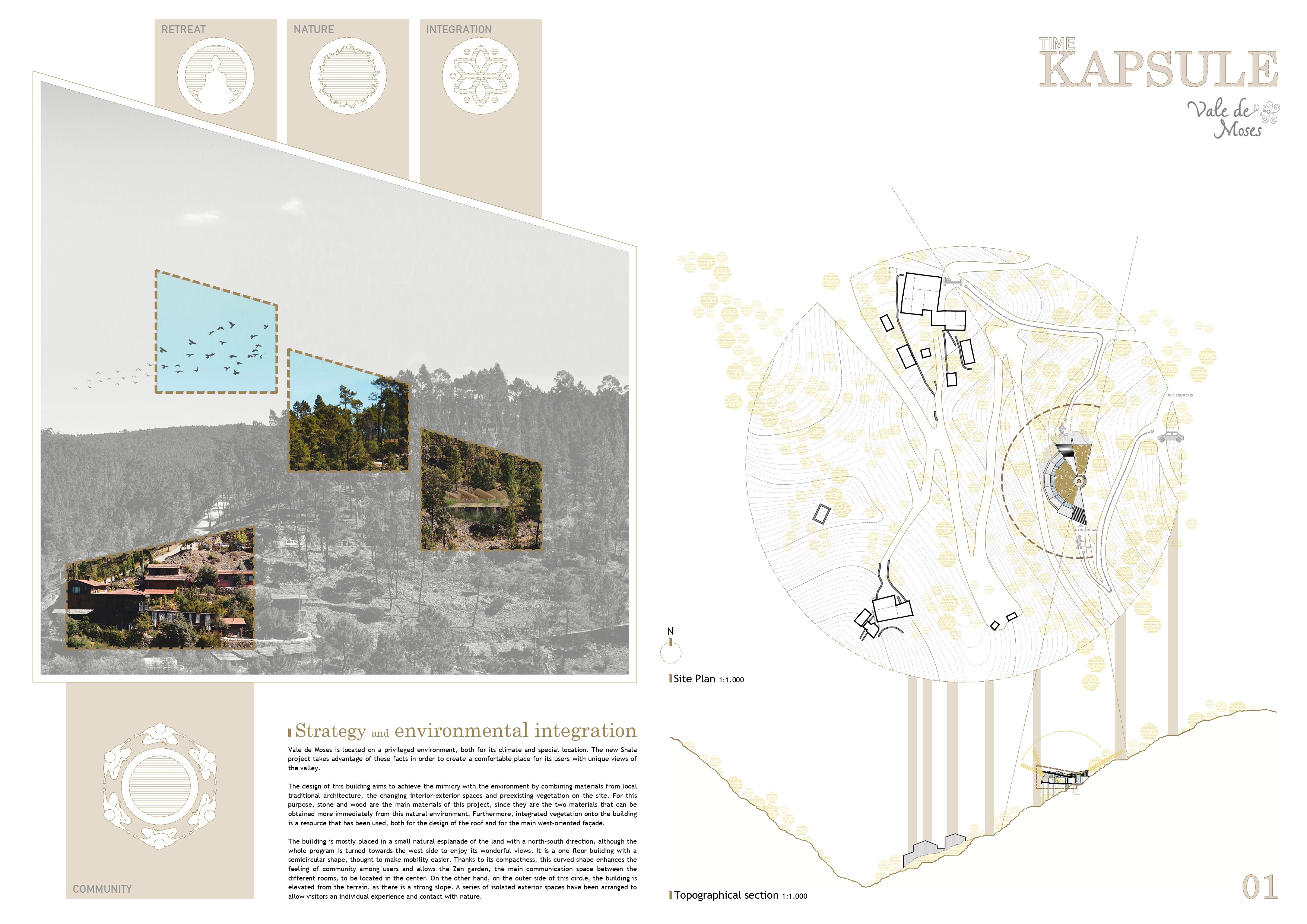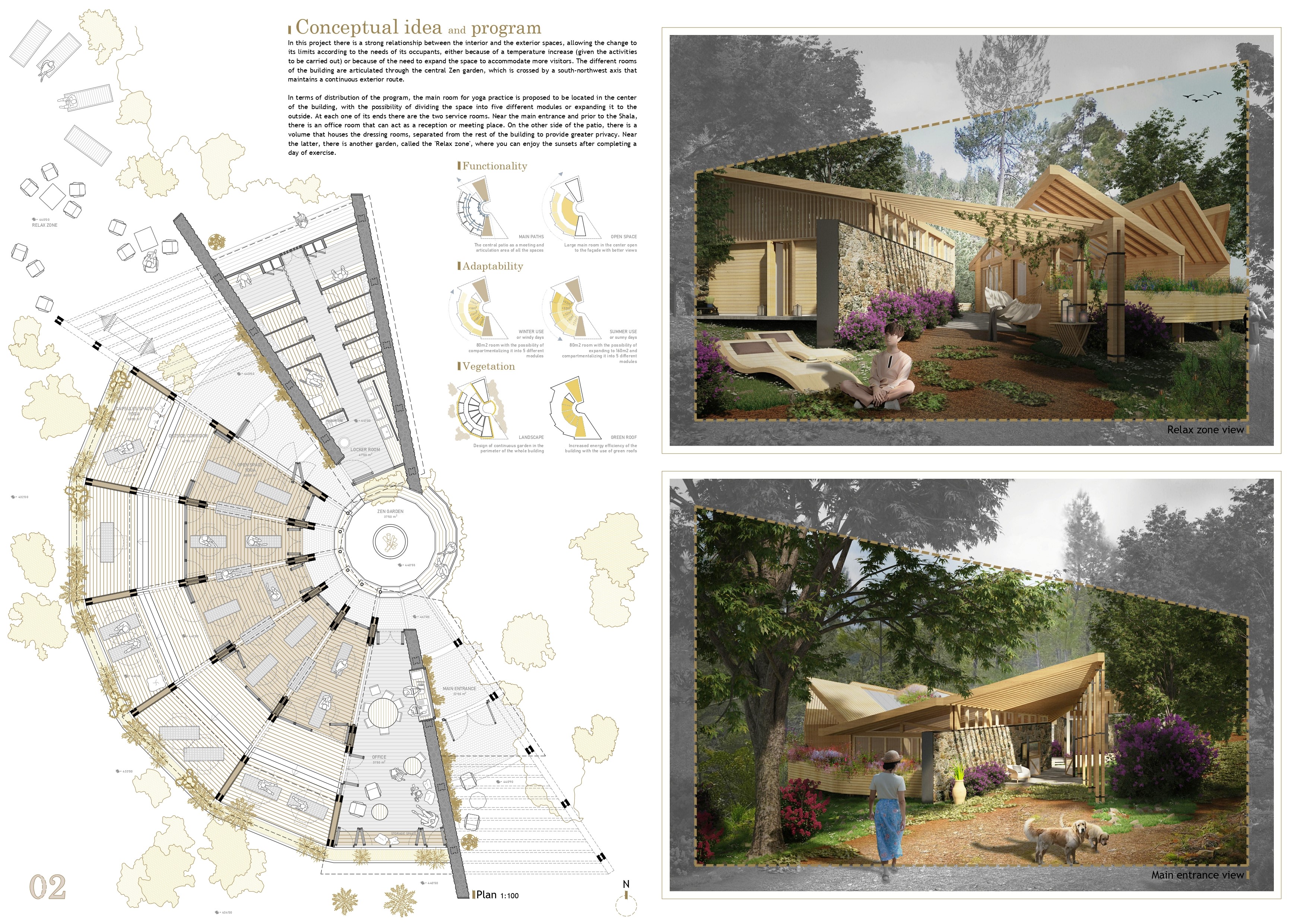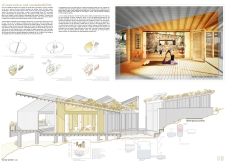5 key facts about this project
From an architectural standpoint, the project functions as a multi-use facility, accommodating [insert function here, e.g., residential, commercial, or community activities]. Its layout is thoughtfully arranged to facilitate interaction and engagement among users, fostering a sense of community within the space. The architecture is characterized by a harmonious blend of indoor and outdoor areas, allowing for fluid transitions that encourage inhabitants to move seamlessly between different environments.
The design incorporates a variety of materials that contribute not only to the aesthetics but also to the performance of the building. Concrete is utilized extensively for its structural integrity, while high-performance glass elements have been strategically placed to maximize natural light without compromising energy efficiency. The use of reclaimed timber adds a touch of warmth to the overall aesthetic, reflecting an environmentally responsible approach to material selection. Other materials, such as terracotta brick and local limestone, tie the structure back to its geographic roots, paying homage to traditional architectural practices while utilizing modern sensibilities.
A key aspect of the project is its unique design approach, which emphasizes sustainable practices and innovative solutions. The building integrates passive design strategies to minimize energy consumption, such as strategically placed windows that encourage natural ventilation and shading. Additionally, features like green roofs and rainwater harvesting systems enhance the ecological footprint of the project, making it a model for future architectural endeavors in sustainability.
Landscaping plays a significant role in reinforcing the architectural vision. Native planting schemes and carefully designed outdoor spaces enhance biodiversity and provide recreational opportunities for the community. These design elements are not merely ornamental; they serve practical functions, such as managing stormwater and creating inviting spaces for social interaction.
Furthermore, the project’s layout is intentional, with designated zones allowing for various functions—be it communal gathering areas, private spaces, or flexible meeting rooms. This flexibility is key to addressing the varied needs of the users, ensuring that the architecture serves a diverse demographic. The clever incorporation of technology throughout the design enhances user experience, providing smart building solutions that optimize comfort and functionality.
The emphasis on human-centric design stands out, as the project aims to create spaces that nurture well-being and encourage interaction among individuals. By facilitating a dialogue between the users and their environment, the architecture resonates with the community's needs while remaining adaptable to future changes.
In exploring this architectural endeavor further, readers are encouraged to review the architectural plans, sections, designs, and ideas that offer deeper insights into the innovative thought processes behind the project. Each of these elements contributes to a thorough understanding of the architecture and its implications within its context, showcasing how design can function meaningfully in both practical and aesthetic dimensions. This project serves as a compelling example of how architecture can effectively bridge the gap between contemporary needs and the rich narrative of its location.


























